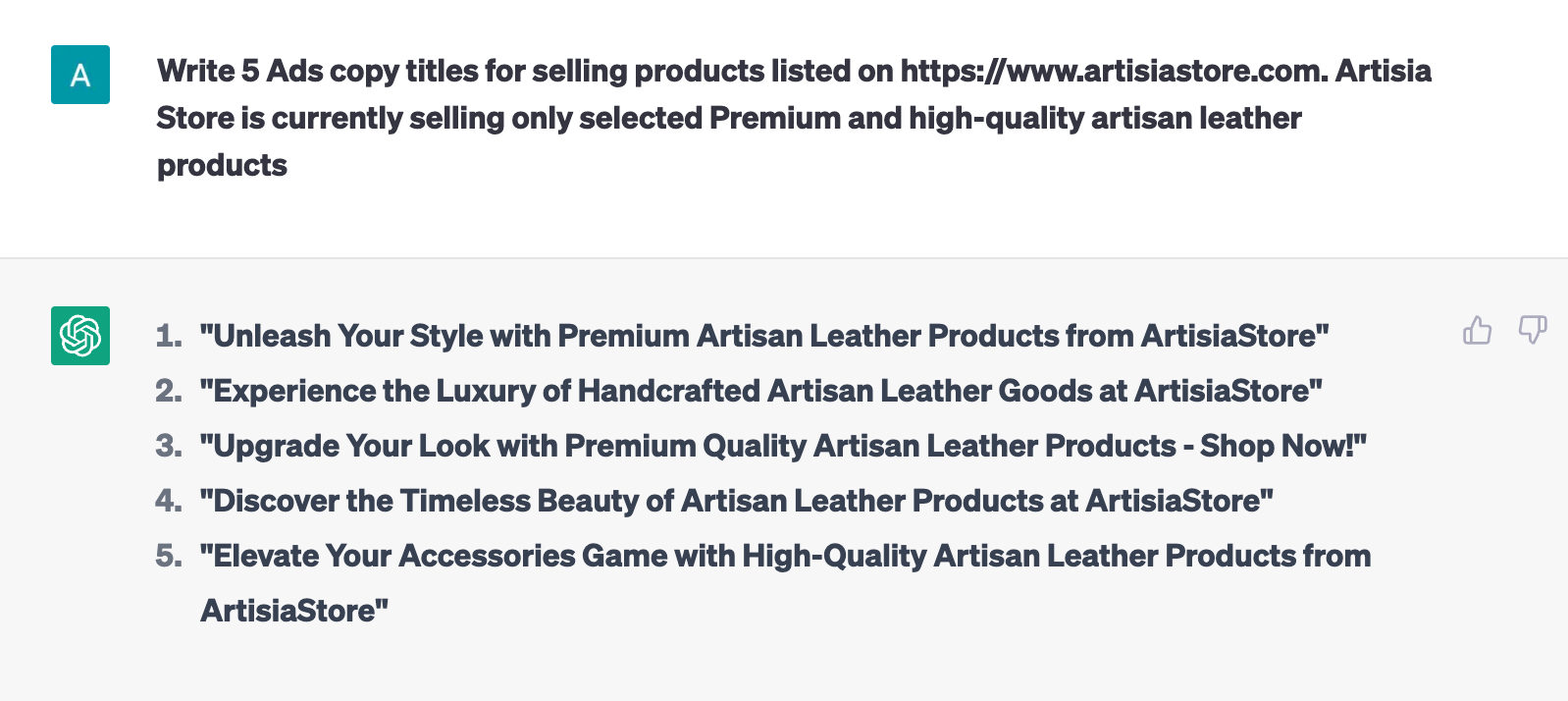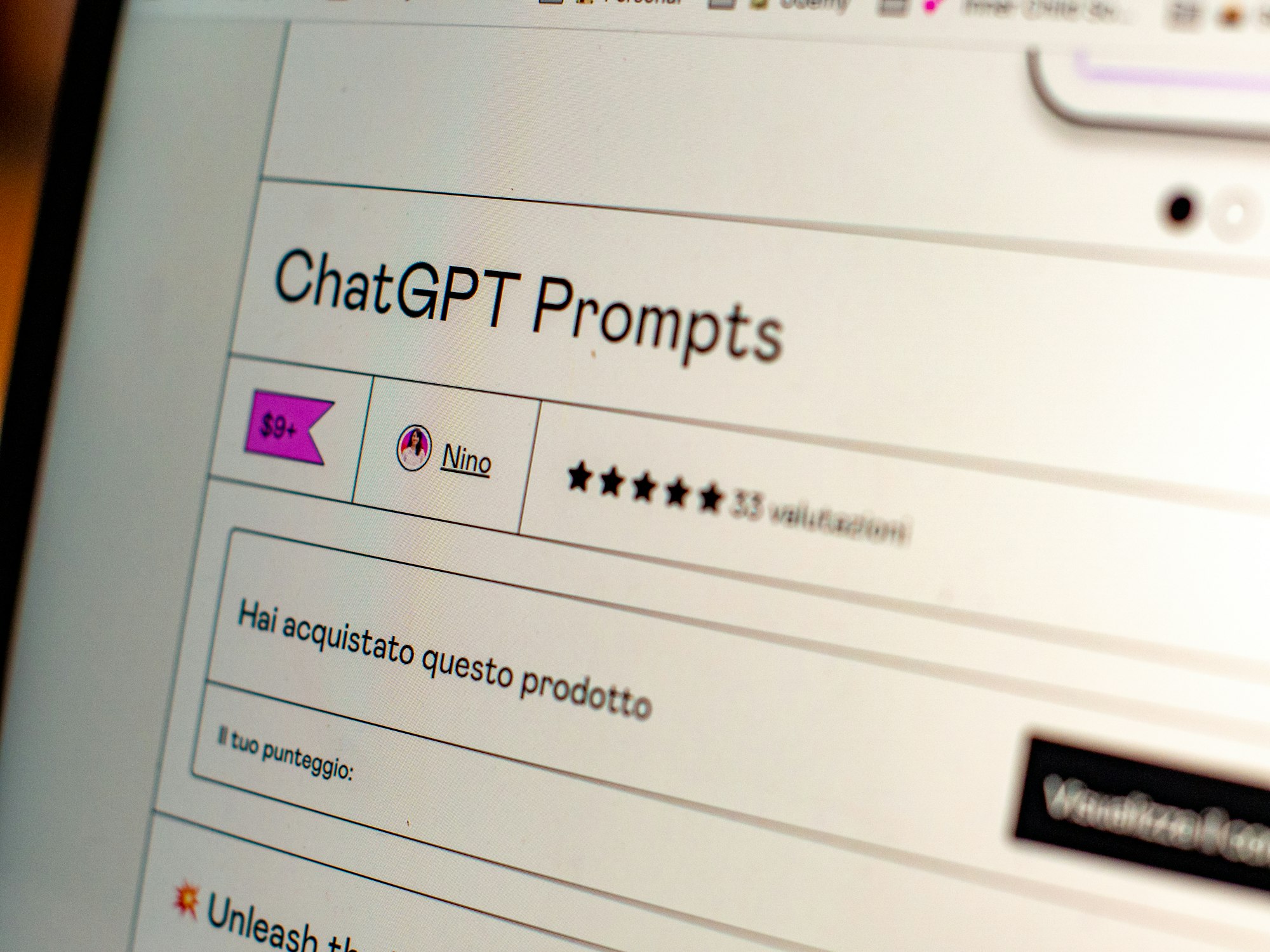The revolutionary new chatbot is taking the e-commerce world by storm. ChatGPT is a powerful tool that allows businesses to interact with customers in a natural, human-like way, providing an engaging and personalized experience that will surely win over even the most sceptical customer. If you want to take your e-commerce business to the next level, use ChatGPT.
But what exactly is ChatGPT, and how can it be used to benefit your business? In this article, we'll look in-depth at ChatGPT and its many features and provide some strategies for using it in the fashion industry. By the end, you'll understand how this powerful tool can be used to improve your online store's bottom line.
What is ChatGPT?
ChatGPT is a revolutionary new artificial intelligence technology that enables fashion e-commerce businesses to provide their customers with intelligent, personalized recommendations in real-time. Unlike traditional recommendation engines, which rely on pre-defined rules or past behaviour to make recommendations, ChatGPT uses a deep learning algorithm to understand the customer's current context and preferences to provide the most relevant offers.
ChatGPT was launched on 30th November 2022, offering businesses an invaluable asset in customer support and information gathering. The AI-powered chatbot uses natural language processing with GPT-3 technology to produce conversations tailored to the user's input. ChatGPT is proficient in responding to a broad range of queries quickly and efficiently.
How would ChatGPT evolve?
Created in 2016 by Google Brain researcher Alec Radford, ChatGPT is an open-source neural network model that can generate human-like responses to questions posed in natural language. The model was trained on a dataset of over 8 million dialogue exchanges from the popular online chatroom Reddit.
Throughout its development, ChatGPT has undergone several significant changes. In its earliest incarnation, the model could only generate single-word responses. However, as it was further trained on more data, it created longer and more complex answers.
One of the most notable changes to ChatGPT came in 2019 when the model was updated to use a new type of transformer known as a GPT2. This update allowed the model to generate even more human-like responses, making it much faster and more efficient.
Since then, ChatGPT has continued to evolve, with new updates and improvements regularly added. The latest version of the model, released in 2020, is said to be even more realistic and human-like than ever before. AsChatGPT continues to evolve; we will likely see even more impressive results from this incredible artificial intelligence technology.
Three examples of using ChatGPT in E-Commerce
It can create personalized customer recommendations, help with product discovery, or provide customer support. Additionally, ChatGPT can make a virtual dressing room where customers can try on clothes and see how they look before purchasing them.
Fashion industry can increase sales and improve customer experience, supported by ChatGPT machine learning. Empower customer experience mean also uplift the perception values of customerrs and adding value in the whole customer journey.
1. Integrate ChatGPT in your customer care support flow
You can use ChatGPT to answer customer questions in real time, which can help reduce support costs and recommend the right products to the customer.
ChatGPT can be trained to understand the nuances of natural language and can converse with customers more human-likely, creating a more personalized shopping experience.
It can be helpful for:
- Answer questions based on the customer's needs or purchasing history
- Create conversational agents with the proper training
- Give a natural language interface to your live chat support
- Translate the languages of your customers
Its Recommendation can be integrated into chatbots or virtual assistants to provide real-time assistance to customers. For example, ChatGPT can recommend similar products or assist with any questions or concerns if a customer is searching for a specific product.
Using its powerful machine-learning model, you can integrate it by API, adding products and customers to generate the proper answers. It can recommend the fitting t-shirt for a recently purchased pair of pants or support completing a checkout input field exactly when it happens. This makes it easy for customers to buy your products, avoiding leaving e-commerce.
Below, there's a sample code from the ChatGPT website for testing.

You can also use ChatGPT's messaging feature to follow up with customers after they've made a purchase, to ask for a review after their use or recommend a cross-sell product.
This is a great way to build relationships with your customers and keep them returning for more, and triggering this marketing tactic based on customer patterns is explosive!
2. Use ChatGPT to help you with marketing campaigns
ChatGPT can identify the most appropriate channels for a campaign based on the target demographic, objectives and budget. You can search for the best medium for specific segments, sending your e-commerce or competitors one.
Asking ChatGPT to generate a list of the most frequently asked questions related to your most important keyword that is relevant for your target audience, you can get this type of answer:

By answering these questions in your "Angles", you can intercept an audience more likely aligned on e-commerce.
Asking instead to write titles and ad copy specifically for e-commerce, you must give as much information as you can in the chat history and, when prompted with the question, to get the maximum from ChatGPT.
Below is a fundamental example.

3. Use ChatGPT to empower Customer Experience
Use ChatGPT to increase sales: you can use ChatGPT to upsell and cross-sell products to customers, increasing your average order value.
To provide more accurate recommendations, ChatGPT also allows businesses to engage in two-way conversations with their customers to understand their needs better and provide an even more personalized shopping experience.
ChatGPT is already being used by some of the world's leading fashion e-commerce businesses and is quickly becoming the industry standard for Recommendation as a Service (RaaS).
- Personalization: it can help personalize the shopping experience for customers by analyzing their search history, purchase history, and navigation behaviour events. ChatGPT can recommend products that align with their preferences and interests, increasing the chances of making a sale.
- Upselling and Cross-selling: its Recommendation can also suggest related or complementary products to customers, leading to higher order values and increased revenue for the e-commerce business. For example, ChatGPT could recommend a camera bag or a tripod if a customer buys a camera.
- Customer Retention: it can recommend products based on previous purchases and engagement, creating a personalized experience that enhances customer satisfaction and retention.
- Product Discovery: its Recommendation can suggest new products that customers might not have known otherwise. This can help e-commerce businesses introduce customers to their full range of products and increase
It can assist with inventory management by analyzing customer demand and recommending which products to restock, leading to better resource allocation and reduced waste.
Conclusion
The power of AI-assisted content marketing and copywriting enables businesses to generate compelling, tailored content expedited based on user interests. This increases the chance of attracting and returning audiences to their website or social media channels.
In addition, AI can be used to research and aggregate information from various sources, aiding companies in creating a unified and significant content marketing plan. It can accelerate the production of high-grade materials while reducing the time needed for compilation. This technology allows businesses to widen their online presence and boost customer engagement.
Schedule a meeting to start a growth marketing strategy, based on your customer and business insights, in a few weeks.
